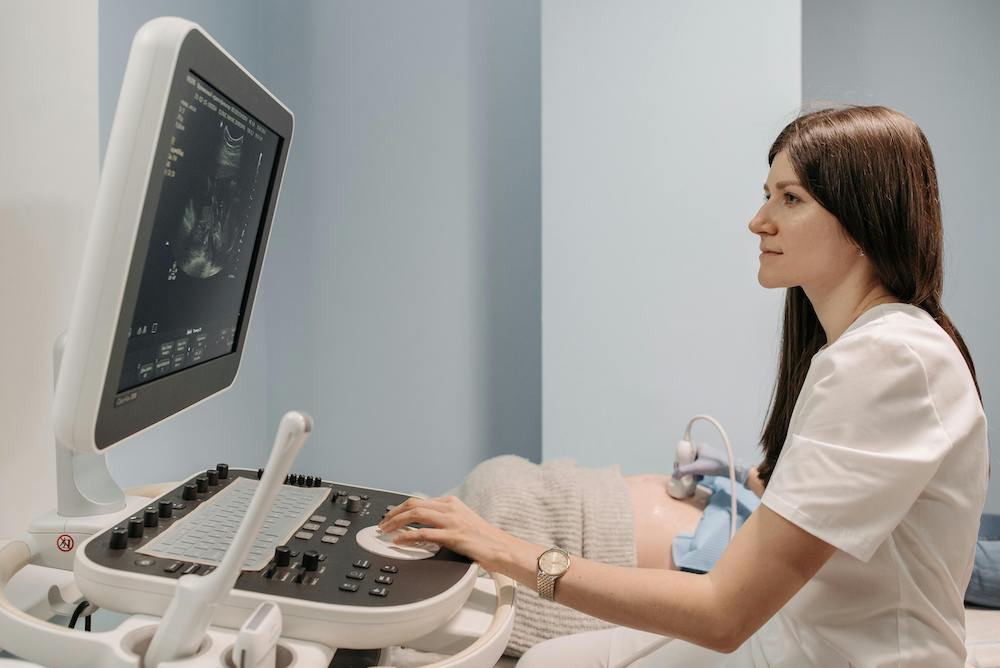Table of Contents
ToggleExperiencing acute abdominal pain shortly after enjoying a meal can be disruptive and unsettling. While you may initially dismiss this discomfort as simple indigestion, severe pain could potentially be a sign of gallstones.
As gallstones can be a more serious condition requiring medical attention, it’s crucial to differentiate between common digestive upset and gallbladder issues if you regularly experience abdominal pain after eating.
As such, this blog aims to help you identify when your symptoms may be related to your gallbladder, so that you can seek the necessary medical assessment.
Where Does Gallbladder Pain Start and How Is It Unique?
Gallbladder pain often begins as a sudden, sharp pain under the right rib cage in the upper abdomen, typically occurring shortly after a meal. This pain may sometimes radiate to the right shoulder blade or the back.
Some individuals may also experience intensifying pain in the centre of the abdomen, below the breastbone.
Its intensity is generally much more severe than simple indigestion, which usually manifests as general burning (heartburn) or bloating.
Its specific location, coupled with its severity and occurrence after eating, makes gallbladder pain distinct from other types of abdominal pain.
small organ beneath the liver that stores and releases bile to aid digestion. They can form when bile contains too much cholesterol, bilirubin, or when the gallbladder does not empty efficiently.
The size of gallstones can range from a tiny grain of sand to several centimetres across, with some people forming just one stone and others developing multiple stones at once. While many remain asymptomatic, others may experience pain or complications that require gallstones surgery.
Why Gallbladder Pain Worsens After Eating
Gallstone pain tends to get worse after eating due to the release of bile by the gallbladder when dietary fat is consumed.
Bile, a greenish-yellow fluid produced by the liver, helps to digest fat. When fatty foods are consumed, the gallbladder contracts to squeeze bile out. Here are some common triggers:
- Fried foods
- Full-fat dairy
- Fast food
- Red and processed meats
- Sugary and refined carbohydrates
However, hardened deposits of bile can form in the gallbladder, resulting in gallstones. These stones range in size from as small as a grain of sand to as large as a golf ball.
When a gallstone blocks the bile duct, the gallbladder’s contraction causes a sharp, concentrated abdominal pain. Its specific location, coupled with its severity and occurrence after eating, makes gallbladder pain distinct from other types of abdominal pain.
How Long Can Gallstone Pain Last?
The pain from a typical biliary colic attack from gallstones usually lasts for a few minutes to a few hours before gradually subsiding. This occurs after the gallstone shifts or the gallbladder relaxes.
However, if the pain persists for more than two to three hours or becomes unrelenting, it may signal a potentially dangerous complication, such as:
- Acute inflammation of the gallbladder: A gallstone lodged in the neck of the gallbladder may result in cholecystitis, causing severe pain and fever.
- Blockage of the pancreatic duct: The pancreatic duct, which connects from the pancreas to the common bile duct, may become blocked by a gallstone. In turn, this blockage can lead to the inflammation of the pancreas (pancreatitis).
- Gallbladder cancer: While the condition is rare, individuals with a history of gallstones have an increased risk of gallbladder cancer.
If you experience persistent abdominal pain, seek urgent medical attention immediately. Refrain from attempting to endure the pain.
How Do You Relieve Gallbladder Pain?
If you experience a gallstone attack, here are some ways to manage the immediate discomfort:
- Stop intake of fatty foods immediately: Cease eating anything high in fat to avoid triggering further gallbladder contraction. This can help to reduce the intensity of the concentrated pain.
- Apply a warm compress: Place a heating pad or warm compress on the upper right abdomen to relax the surrounding muscles and provide temporary relief from sharp spasms.
- Take a magnesium supplement: Some individuals find that a magnesium supplement can help the gallbladder relax and promote emptying, potentially easing the discomfort of an attack.
- Stay hydrated: Drink plenty of water to maintain the fluidity of bile and support overall digestive function. By doing so, you can potentially reduce stress on the gallbladder.
- Use over-the-counter pain medication: Pain relievers may provide temporary relief while you prepare to see a specialist. However, do ensure the medication is permitted by a doctor before use.
While home remedies may provide temporary relief, they are not a long-term solution for gallstones pain. As such, do consult a hepatobiliary specialist for an accurate diagnosis and necessary treatment if you experience prolonged abdominal pain or suspect gallstones.
Warning Signs: When Abdominal Pain from Gallstones Becomes an Emergency
Delaying treatment for severe gallbladder pain can lead to serious complications that constitute a medical emergency. For instance, the gallstones may cause severe inflammation or move to block the main bile duct, which can be life-threatening.
Here are some symptoms that signal complications of gallstones:
- Fever and chills: These are strong indicators of an underlying infection, such as acute cholecystitis, where bile flow is blocked and bacteria multiply rapidly.
- Persistent nausea and vomiting: Incessant vomiting and the inability to keep food down often accompany severe blockages or acute inflammation of the gallbladder.
- Yellowing of the skin and eyes: The onset of jaundice signals that bile is backing up into the liver and bloodstream, often due to a blocked common bile duct.
If you experience these symptoms, do seek urgent consultation with a gallstones surgeon. In some situations, gallbladder removal surgery may be required to mitigate more severe health issues.
Turn Worry into Action

A sudden and persistent sharp pain under the right rib cage, particularly after eating, is a distinct warning sign of potential gallbladder issues. This requires a medical specialist’s professional evaluation to obtain an accurate diagnosis and treatment plan. Your healthcare provider will typically conduct diagnostic tests, such as ultrasounds and CT scans, to determine the severity of the condition and the best course of action.
Therefore, if you are experiencing severe abdominal pain as described or suspect gallstones, schedule a consultation with Dr. Thng Yongxian as soon as possible to gain clarity and ensure timely care.
